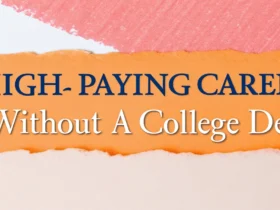Cracking the code to college affordability shouldn’t feel like an impossible mission. You are not alone if you feel swamped by applications, essays, and the looming question of how to pay for it all. Each year, millions of students and their families navigate the complexities of financial aid, searching for ways to make higher education dreams a reality. But, what if you could unlock a hidden playbook filled with financial aid secrets that could ease the burden and open doors to funding you never knew existed?
This article is not just another guide; it’s your key to understanding the financial aid process, maximizing your eligibility, and uncovering often-overlooked opportunities. We’ll dive deep into the strategies, timelines, and insider tips that can make all the difference in securing the funds you need to achieve your academic goals. Let’s transform the daunting task of funding your education into an achievable plan, giving you the confidence to pursue your dreams without the weight of overwhelming debt.
Financial Aid: Decoding the Basics
Financial aid is money to help students pay for college or career school. It is the collective term for scholarships, grants, loans, and work-study programs designed to make education more accessible. Understanding the different types of aid and how they work is the first step to navigating the process successfully.
- Grants: Grants are often need-based and don’t have to be repaid, making them a valuable source of funding. Federal grants, such as the Pell Grant, are available to eligible undergraduate students.
- Scholarships: Scholarships are typically merit-based, awarded based on academic achievement, talent, or specific criteria set by the scholarship provider. Like grants, scholarships do not require repayment.
- Loans: Loans, both federal and private, provide funds that must be repaid with interest. Federal student loans often have more favorable terms and repayment options than private loans.
- Work-Study: The Federal Work-Study program provides part-time jobs for undergraduate and graduate students with financial need, allowing them to earn money to help pay for educational expenses.
The key to mastering financial aid is knowing where to look and how to apply. The Free Application for Federal Student Aid (FAFSA) is the gateway to federal aid, while individual colleges and universities may have their own application processes for institutional aid.
Why Financial Aid Matters
Financial aid is not just about easing the financial burden of college; it’s about creating opportunity. By providing access to education for students from all economic backgrounds, financial aid helps to level the playing field and promote social mobility.
- Increased Access: Financial aid enables students from low- and middle-income families to afford college, expanding access to higher education and career advancement.
- Reduced Debt: By utilizing grants, scholarships, and work-study programs, students can minimize their reliance on loans, reducing the burden of student debt after graduation.
- Economic Impact: Investing in education through financial aid has a positive impact on the economy, creating a more skilled and educated workforce.
- Personal Growth: Financial aid empowers students to pursue their passions and achieve their full potential, leading to personal and professional fulfillment.
Understanding the FAFSA: Your First Step
The FAFSA is the single most important application in the financial aid process. This form gathers key information about your family’s financial situation, which is used to determine your eligibility for federal student aid. The FAFSA is free to complete and should be submitted as early as possible, as some aid is awarded on a first-come, first-served basis.
- Create an FSA ID: Both the student and a parent (if the student is a dependent) will need to create an FSA ID, which serves as an electronic signature.
- Gather Necessary Documents: Collect your Social Security numbers, tax returns, bank statements, and other financial records.
- Complete the FAFSA Form: Fill out the FAFSA form online at the official Federal Student Aid website, carefully answering each question.
- Submit the Form: Review your answers and submit the FAFSA form before the deadline.
EFC is No More, Meet the SAI: Adapting to Changes
The financial aid landscape is ever-evolving, and recent changes to the FAFSA have replaced the Expected Family Contribution (EFC) with the Student Aid Index (SAI). This new metric aims to provide a more accurate assessment of a student’s financial need.
- Student Aid Index (SAI): The SAI considers various factors, including income, assets, and family size, to determine the amount a student and their family can reasonably contribute to college costs.
- Impact on Aid Eligibility: The SAI may result in changes to a student’s aid eligibility, potentially increasing or decreasing the amount of aid received.
- Adjusting Strategies: Families should familiarize themselves with the SAI and its potential impact on their financial aid plan, adjusting their strategies accordingly.
Financial Aid Secrets to Unlock
Now, let’s dive into the financial aid secrets that can help you maximize your eligibility and secure more funding for college. These strategies are often overlooked or misunderstood, but they can make a significant difference in your ability to afford higher education.
1. Timing Is Everything: Early Bird Gets the Aid
One of the most important secrets in financial aid is timing. The FAFSA opens on October 1st each year, and you should aim to submit your application as close to that date as possible. Many states and colleges award aid on a first-come, first-served basis, so applying early can increase your chances of receiving more funding.
- State Deadlines: Be aware of your state’s FAFSA deadline, as it may be earlier than the federal deadline.
- College Deadlines: Check the financial aid deadlines for each college you are applying to, as they may also have their own deadlines.
- Beat the Rush: Applying early also allows you to avoid the last-minute rush and potential technical issues with the FAFSA website.
2. Don’t Assume You Won’t Qualify: Apply Anyway
Many families mistakenly believe they won’t qualify for financial aid because they assume their income is too high. However, various factors are considered in determining aid eligibility, and you may be surprised at the amount of aid you receive.
- FAFSA is Free: It costs nothing to complete the FAFSA, so there’s no harm in applying, even if you think you won’t qualify.
- Need-Based Aid: Even families with moderate incomes may be eligible for need-based aid, such as the Pell Grant or subsidized student loans.
- Merit-Based Aid: Don’t forget about merit-based scholarships, which are awarded based on academic achievement or other talents, regardless of financial need.
3. Report Assets Strategically: What Counts and What Doesn’t
How you report your assets on the FAFSA can impact your aid eligibility. Some assets are considered in the financial aid calculation, while others are not.
- Countable Assets: Include checking and savings accounts, stocks, bonds, mutual funds, and real estate (excluding your primary residence).
- Non-Countable Assets: Do not include retirement accounts (401(k)s, IRAs), life insurance policies, or the value of your personal belongings.
- Asset Protection Strategies: Consider strategies such as paying down debt or contributing to retirement accounts to reduce the amount of countable assets.
4. Understand Dependency Status: Who’s the “Parent” on the FAFSA?
Determining your dependency status is crucial, as it affects whose financial information is reported on the FAFSA. If you are considered a dependent student, you must include your parents’ financial information, which can impact your aid eligibility.
- Dependent vs. Independent: Generally, students under the age of 24 are considered dependent, unless they meet specific criteria, such as being married, having dependents of their own, or being a veteran.
- Divorced or Separated Parents: If your parents are divorced or separated, you should report the financial information of the parent you lived with the most during the past 12 months.
- Special Circumstances: If you have unusual circumstances that affect your dependency status, such as an abusive family situation, you may be able to apply as an independent student.
5. Appeal for More Aid: Professional Judgment Review
If you experience a significant change in your financial situation, such as job loss or medical expenses, you can appeal to the college’s financial aid office for a professional judgment review. This allows the financial aid officer to consider your unique circumstances and potentially increase your aid eligibility.
- Document Everything: Gather documentation to support your appeal, such as letters from employers, medical bills, or legal documents.
- Write a Detailed Letter: Explain your situation clearly and concisely, highlighting the impact on your ability to pay for college.
- Be Persistent: Follow up with the financial aid office to ensure your appeal is being reviewed and to answer any questions they may have.
6. Tap into Hidden Scholarship Markets: Niche is Nice
Beyond the large, well-known scholarship programs, there are countless smaller, niche scholarships that may have less competition. These scholarships may be targeted towards students with specific interests, backgrounds, or affiliations.
- Local Scholarships: Check with local businesses, community organizations, and religious groups for scholarship opportunities.
- Major-Specific Scholarships: Many academic departments offer scholarships to students pursuing specific majors.
- Identity-Based Scholarships: Explore scholarships for students with specific ethnic, racial, or gender identities.
7. Negotiate Your Aid Package: It Never Hurts to Ask
Once you receive your financial aid offers from colleges, don’t be afraid to negotiate for more aid. Colleges may be willing to increase your aid package if you have a compelling reason, such as a better offer from another school.
- Compare Offers: Use your financial aid offers from different colleges as leverage to negotiate for more aid.
- Highlight Achievements: Showcase your academic achievements, talents, and extracurricular activities to demonstrate your value as a student.
- Be Polite and Respectful: Approach the negotiation with a positive attitude and be respectful of the financial aid officer’s time and resources.
8. Consider Community College First: The Smart Start
Starting your college education at a community college can save you a significant amount of money, especially if you plan to transfer to a four-year university later. Community colleges typically have lower tuition rates than four-year schools, and you can complete your general education requirements at a fraction of the cost.
- Transfer Agreements: Check with your local community college to see if they have transfer agreements with four-year universities, ensuring your credits will transfer seamlessly.
- Save on Housing: Living at home while attending community college can also save you money on room and board.
- Explore Career Programs: Community colleges also offer valuable career programs that can lead to immediate employment after graduation.
9. Work-Study and Part-Time Jobs: Earn While You Learn
Work-study programs and part-time jobs offer a way to earn money to help pay for college expenses while gaining valuable work experience.
- Federal Work-Study: If you are eligible for federal work-study, explore job opportunities on campus or with approved off-campus employers.
- On-Campus Jobs: Many colleges offer part-time jobs in departments such as the library, dining hall, or student center.
- Off-Campus Jobs: Look for part-time jobs in your local community, such as retail, food service, or tutoring.
10. Tax Benefits for Education: Don’t Leave Money on the Table
Take advantage of tax benefits for education, such as the American Opportunity Tax Credit (AOTC) and the Lifetime Learning Credit (LLC), to reduce your tax liability and offset college costs.
- American Opportunity Tax Credit (AOTC): The AOTC provides a tax credit of up to \$2,500 per student for the first four years of college.
- Lifetime Learning Credit (LLC): The LLC provides a tax credit of up to \$2,000 per family for qualified education expenses.
- Consult a Tax Professional: Seek advice from a tax professional to determine which tax benefits you are eligible for and how to claim them.
Additional Resources for Your Financial Aid Journey
Navigating the world of financial aid can be complex, but you don’t have to do it alone. Numerous resources are available to help you understand the process, explore funding options, and make informed decisions about your education.
- Federal Student Aid Website: The official website of the U.S. Department of Education offers comprehensive information about federal student aid programs, eligibility requirements, and application procedures.
- College Board: The College Board website provides valuable tools and resources for college planning, including scholarship search engines, financial aid calculators, and information about standardized tests.
- Fastweb: Fastweb is a popular scholarship search engine that connects students with scholarship opportunities based on their interests, skills, and background.
- FinAid: FinAid is a comprehensive website that provides information about all aspects of financial aid, including scholarships, grants, loans, and work-study programs.
- Mapping Your Future: Mapping Your Future is a nonprofit organization that provides free financial literacy resources for students, including information about budgeting, saving, and managing student debt.
The Risks of Private Student Loans: Proceed with Caution
While federal student loans offer favorable terms and repayment options, private student loans may come with higher interest rates, fees, and less flexible repayment plans. It’s important to understand the risks of private student loans and exhaust all other funding options before considering them.
- Higher Interest Rates: Private student loans typically have higher interest rates than federal student loans, which can significantly increase the total cost of your education.
- Variable Interest Rates: Many private student loans have variable interest rates, which means your interest rate and monthly payments can increase over time.
- Less Flexible Repayment Plans: Private student loans may not offer the same income-driven repayment plans or deferment options as federal student loans.
- Credit Check Required: Private student loans require a credit check, and you may need a co-signer if you have limited credit history.
Managing Student Loan Debt: Repayment Strategies
For many students, student loans are a necessary part of financing their education. However, it’s important to manage your student loan debt responsibly to avoid financial hardship after graduation.
- Understand Your Loan Terms: Familiarize yourself with the interest rate, repayment term, and any fees associated with your student loans.
- Explore Repayment Options: Federal student loans offer various repayment options, including income-driven repayment plans, which can lower your monthly payments based on your income and family size.
- Consider Loan Consolidation: Consolidating your federal student loans can simplify your repayment and potentially lower your interest rate.
- Avoid Default: Contact your loan servicer immediately if you are struggling to make your student loan payments to explore options such as deferment or forbearance.
When and How to Get Professional Financial Aid Advice
While you can navigate the financial aid process on your own, there are times when seeking professional advice can be beneficial.
- Complex Financial Situations: If you have a complex financial situation, such as self-employment, multiple sources of income, or significant assets, a financial advisor can help you optimize your financial aid strategy.
- Divorced or Separated Parents: If your parents are divorced or separated, a financial advisor can help you navigate the FAFSA rules and maximize your aid eligibility.
- Appealing for More Aid: If you are appealing for more aid due to special circumstances, a financial advisor can help you gather documentation and present your case effectively.
- Choosing a Loan Repayment Plan: A financial advisor can help you evaluate your loan repayment options and choose the plan that best fits your financial goals.
Avoiding Financial Aid Scams: Red Flags to Watch Out For
Unfortunately, financial aid scams are prevalent, and it’s important to be aware of the red flags to avoid becoming a victim.
- Guaranteed Scholarships or Grants: Be wary of any organization that guarantees you’ll receive a scholarship or grant for a fee.
- Requests for Upfront Fees: Legitimate financial aid providers do not require you to pay upfront fees for their services.
- Unsolicited Offers: Be suspicious of unsolicited offers of financial aid, especially if they come from unknown sources.
- Pressure to Act Quickly: Scammers often pressure you to act quickly to take advantage of a limited-time offer.
- Requests for Personal Information: Never provide your Social Security number, bank account information, or other sensitive information to an unverified source.
Empowering Yourself with Knowledge
Securing financial aid can appear like scaling a mountain. But with the right knowledge and strategies, you can navigate the process successfully and make your education dreams a reality. By understanding the basics of financial aid, tapping into hidden opportunities, and managing your student debt responsibly, you can reduce the financial burden of college and focus on achieving your academic and career goals.















Leave a Reply
View Comments